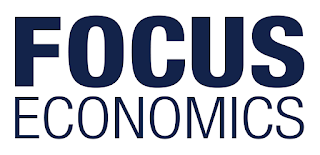Growth is expected to have lost steam in the second quarter, after a healthy expansion at the start of the year. The latest data continues to point to a two-speed economy, with lingering weakness in the manufacturing sector contrasting relatively robust services sector activity. The manufacturing PMI recorded its worst quarter since Q1 2013 in Q2, and a sharp downturn in industry confidence caused economic sentiment to fall to a near three-year low in June. However, the unemployment rate fell to a new over one-decade low in May and the services business activity index rose to a seven-month high in June. Meanwhile, on 2 July, the European Council nominated Christine Lagarde for ECB President, Ursula von der Leyen to head the European Commission and Charles Michel to lead the European Council. The nominees represent a largely pro-European integration stance and also the continued influence of Germany and France, although ultimately policy will be spearhead by heads of states. • Activity is seen slowing sharply this year amid a less favorable external environment, problems in the manufacturing sector and as uncertainty dent exports and investment growth. However, solid spending will curb the downturn. Risks stem from global protectionism, a sharp slowdown in China, resurging financial turbulence sparked by Italy and Brexit uncertainty. Growth is seen at 1.1% in 2019, which is down 0.1 percentage points from last month’s forecast, and 1.3% in 2020. • Harmonized inflation was steady at May’s 1.2% in June and remains below the ECB’s target of under but close to 2.0%. Moderate economic activity, low inflation expectations and subdued oil prices are expected to keep price pressures modest this year. Our analysts see inflation averaging 1.3% in 2019 and 1.4% in 2020. • Christine Lagarde, managing director of the IMF, was nominated to replace Mario Draghi as ECB president when his term ends on 31 October. Lagarde is expected to continue the course steered by Draghi. At the ECB’s 6 June meeting, the Bank pushed back the timing of a possible rate hike amid persistently low inflation. Shortly after, Draghi stated that more stimulus could be unleashed. Accordingly, our panel sees the refinancing rate ending 2019 at 0.00% and 2020 at 0.02%. • The euro remained broadly stable in recent weeks, as weak economic data and a dovish outlook for the ECB were balanced by dovish expectations for the U.S. Federal Reserve. On 19 July, the currency traded at USD 1.12 per EUR, a 0.1% gain month-on-month. The euro is seen remaining steady this year, then strengthening ahead as monetary policy normalizes. Our panel sees the euro ending 2019 at USD 1.14 per EUR and 2020 at USD 1.18 per EUR.
Insight from FocusEconomics Consensus Forecast Euro Area













